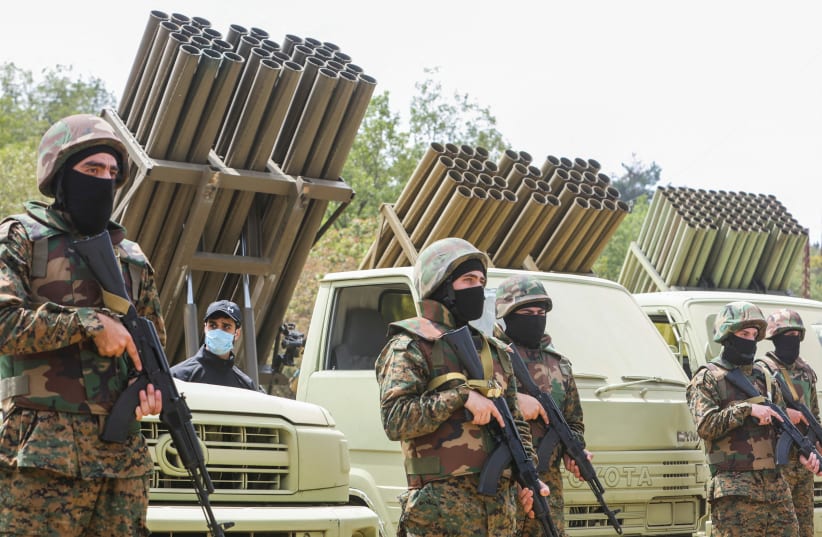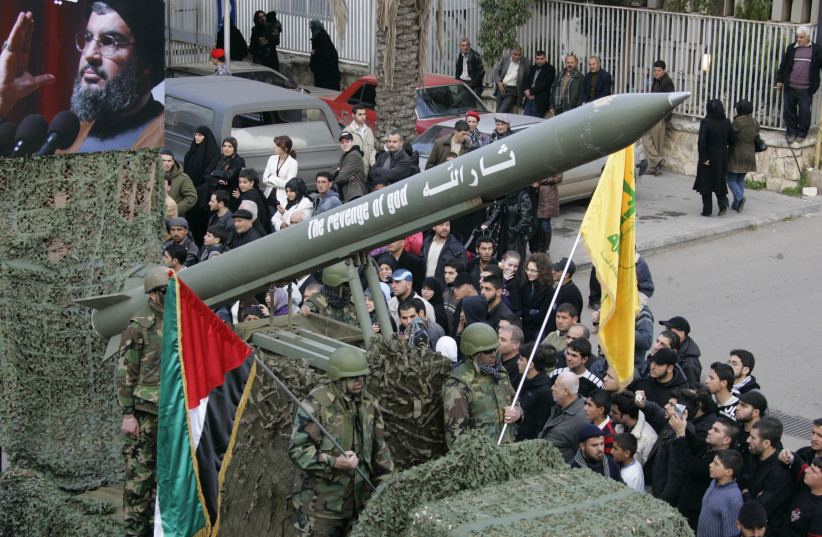by Yonah Jeremy Bob
How much strategic and technical damage did terrorist group’s strikes cause the IDF?
 |
Twice in four days, Hezbollah carried out two successful and significant drone attacks on Israeli positions in the North. On January 6, it was the IAF’s traffic control base on Mount Meron, while on January 9, it was the IDF’s Northern Command Headquarters in Safed. Serious tactical errors contributed to the success of both attacks, though the impact of the latter one was minor.
Then, an anti-tank missile was launched at Moshav Kfar Yuval, killing Mira Ayalon, 79, and her son Barak, 45.
What is the significance of these attacks?
What is the significance of these attacks – both tactical and strategic? Have they helped Hezbollah flip the script on Israel? Did it bring the IDF to a point where it would claim it was progressing in “convincing” Hezbollah to withdraw its forces from the border? That this level of damage is qualitatively different and new?
Tactically, the air force installation had been attacked by Hezbollah before, and is close enough to the border that it should have prepared for an anti-tank missile threat – it has only prepared for rocket threats.


In the region, the Iron Dome and other air defense capabilities do provide coverage, but those defenses only shoot down rockets, which fly higher and on an arc-like trajectory.
Anti-tank missiles fly lower and in a straight line at the target, which are usually heavily armored vehicles, but can easily destroy a house.
The IDF has the Trophy defense system, to block such threats for a single armored land vehicle, but has not deployed defenses for larger areas – like an army base.
This all puts a real dent in the IAF’s capabilities and intelligence detection.
However, The Jerusalem Post has learned that the IDF does have redundancies: surveillance operators, mobile surveillance resources, and combat fighters performing intelligence collection operations.
A few years ago, the combat collection battalion had around 750 troops, with 100 emergency call-ups, and probably has much more in the middle of the current war, with the military’s full reserve complement of 360,000 having been called up in October.
Already in recent years, radars, which are far more advanced than optics detection systems and capable of seeing through foliage, have been used. The main system has been Elbit’s MARS ground surveillance system, which consists of surveillance cameras for different ranges and with different resolutions.
When the radar system spots something, the optical system is alerted and takes up the monitoring process. When it was introduced, the MARS system was hailed due to its ability to be controlled by one operator, whereas the prior system needed to be manned by six.
The Post understands that there are other mobile surveillance and detection systems on the ground posted in parts of the North. However, ground surveillance systems have inherent limitations.
The F-35 stealth fighter can be used for surveillance on basically any front that Israel needs, both from a distance and close-up.
The IDF has not provided drone statistics for the current war of over 100 days, but from May 9-13, 2023, military drones logged over 4,000 hours hovering over Gaza during a five-day operation against Palestinian Islamic Jihad. The logs over Lebanon from the last three months are presumably much larger.
There is also a whole fleet of older spy planes with updated surveillance systems, the Post understands, some of which can see up to 100 kilometers away, including to Damascus, from the Israeli side of the Golan – without even having to enter Syrian airspace at all.
Previously, IDF Lt.-Col. S. told The Post that his unit’s aircraft had “enhanced monitors which collect intelligence for the IDF’s target bank, for intelligence surveillance in general and a variety of special operations.”
A novel aspect of this unit is that “sometimes a representative from the land forces sits in the aircraft with us,” he said. “Earlier, the representative would have presented a briefing about what their mission is, what they are afraid might go wrong, what they want the aircraft to gather in terms of intelligence.
“Combining meeting on the ground earlier with flying together in the air creates deep synergy. This works,” S. added.
They can start surveying far-off areas sometimes after only a few minutes from takeoff since if the areas are open, their long-range cameras and sensors can already be used en route to the destination.
In August, Israel Aerospace Industries (IAI) said that its MAR2 Oron aircraft could be operational in the coming months. The IDF has declined to answer whether the aircraft is currently in use.
If it is, the MARS 2 spy aircraft mixes many of the physical aspects of the older Gulfstream G550 aircraft with a host of newly installed technologies. The 122nd Nachshon Air Force Squadron would be due to operate the aircraft.
It can withstand all inclement weather situations, which could be important for fighting Hezbollah mid-winter.
The MARS2 has eight intelligence collection operator workstations, multi-domain sensors, and a much higher level artificial intelligence (AI) capability for coordinating and systematically sharing the multiple intelligence inputs, The Post has learned.
This AI also knows how to focus more attention on more immediately actionable intelligence, including selecting some of its targets.
The aircraft is faster, can fly higher, travel farther, for about 15-16 hours, and its intelligence surveillance capabilities extend farther than other previous spy aircraft in Israel’s repertoire.
It can see and analyze issues hundreds of kilometers away, whereas many other systems only detect issues at much closer ranges.
Not only does its spying capabilities have higher resolution, a more sophisticated mix of different sensors, and greater interoperability than previous similar aircraft, but it projects its surveillance in all directions.
If previous spy aircraft were focused on an area in front of the aircraft, the MARS 2 can provide a 360-degree plane defense picture.
It is even superior to the F-35 surveillance systems which were developed around 10 years earlier than the newest technologies on the MARS2.
However, after all of the IDF’s ability to adjust tactically, the strategic issues remain considerable.
The military has no response, besides preemptive offense, to stop anti-tank missiles from hitting military or civilian installations within Hezbollah’s eight-kilometer anti-tank missile range.
The missiles speed of some 500 feet per second obviates detection and response.
What's stopping Hezbollah from attacking Israel with thousands of rockets?
If Hezbollah surprised Israel with anti-tank missiles in the above three locations with a few dozen rockets, anti-tank missiles, and drones – without breaking a sweat – what is there to stop it from surprising the IDF with 8,000 rockets all at once against Haifa or Tel Aviv?
To date, the IDF has tried to keep Hezbollah on its heels by attacking it, including with simultaneous attacks on Wadi Saluki on Tuesday.
The IDF has also killed Hezbollah’s drone chief Ali Hussein Bergi, with the terrorist group accusing Jerusalem of killing Hezbollah’s Radwan chief Wissam al-Tawil.
There is no question that Hezbollah has moved back many of its forces from the border and that around 180 Hezbollah and Hamas-affiliated fighters were killed in Lebanon compared to around 20 IDF soldiers to date.
But until the IDF figures out how to thread the needle perfectly – hit assets or persons critical enough to Hezbollah to get it to move all of its forces away from the border and beyond anti-tank missile range, without overstepping into a general war – it will be hard for Israel to translate its military superiority into long-term sustainable security gains.
Yonah Jeremy Bob
Source: https://www.jpost.com/israel-news/article-782450
No comments:
Post a Comment